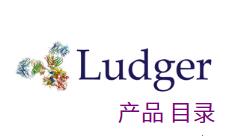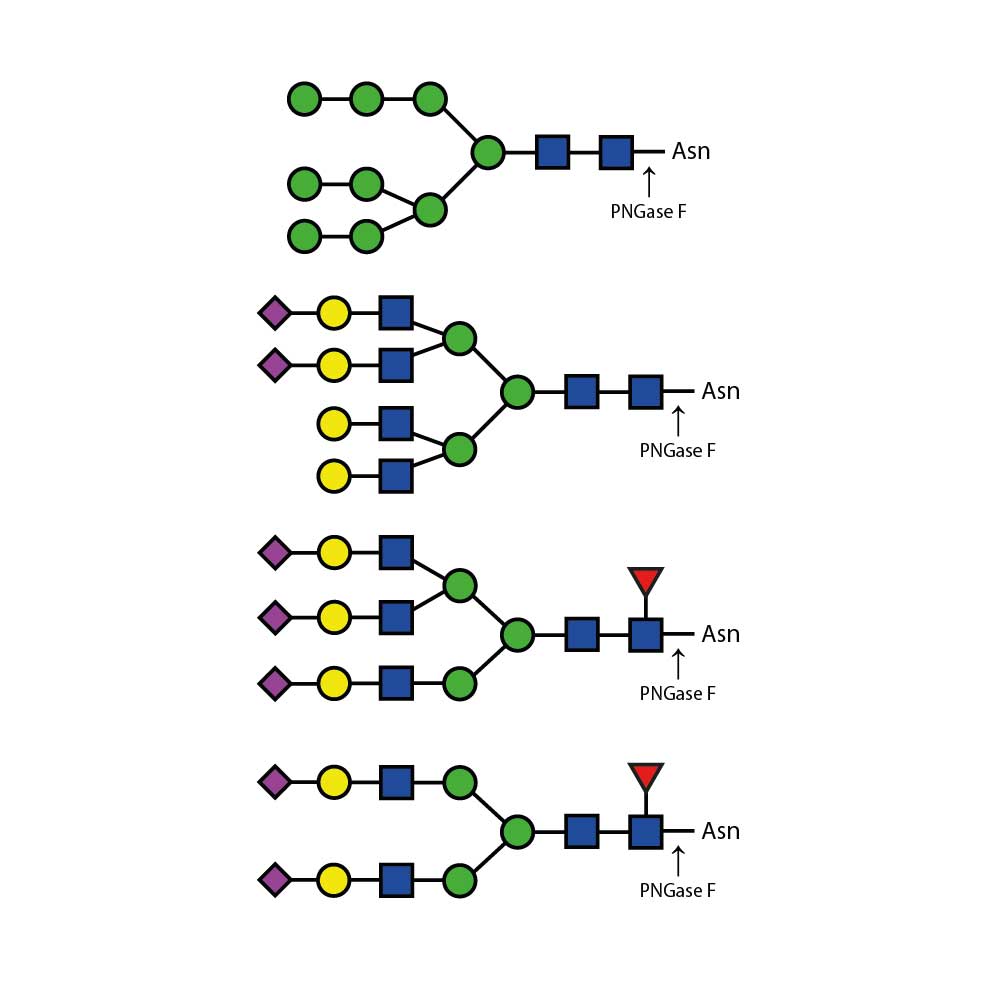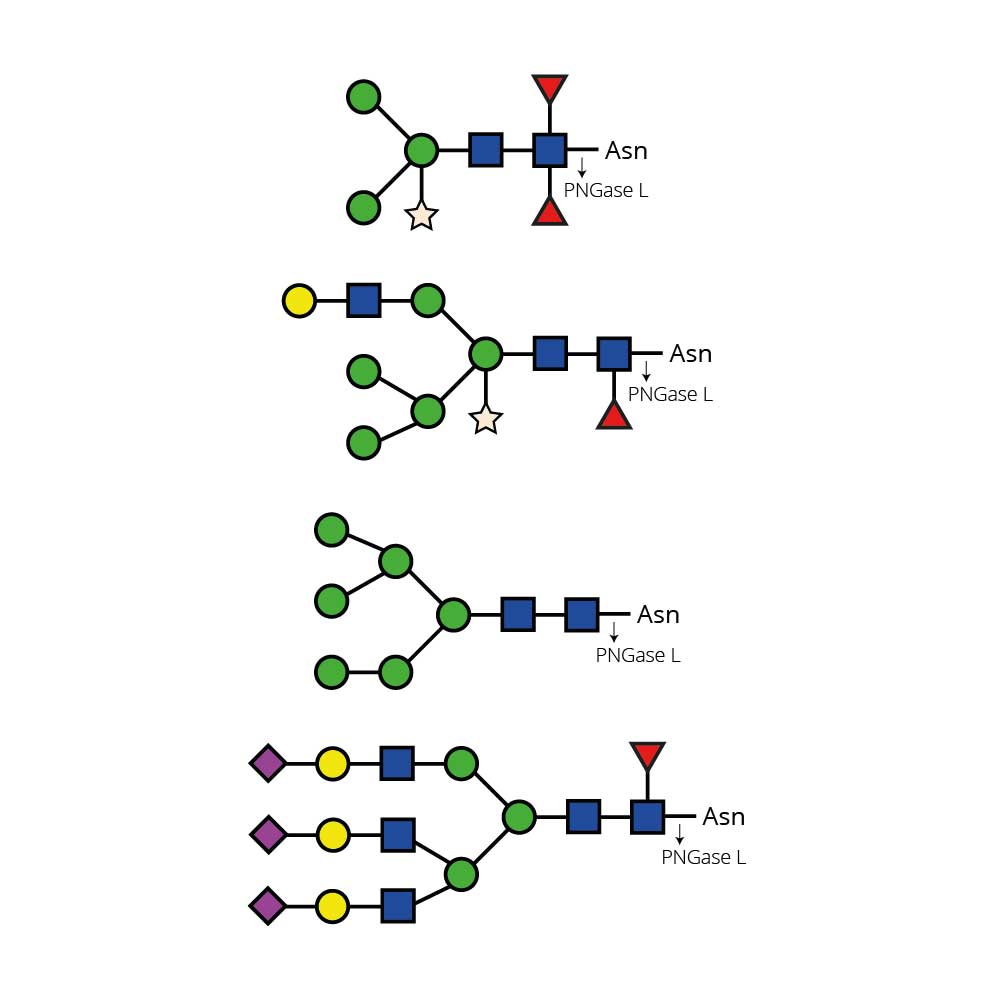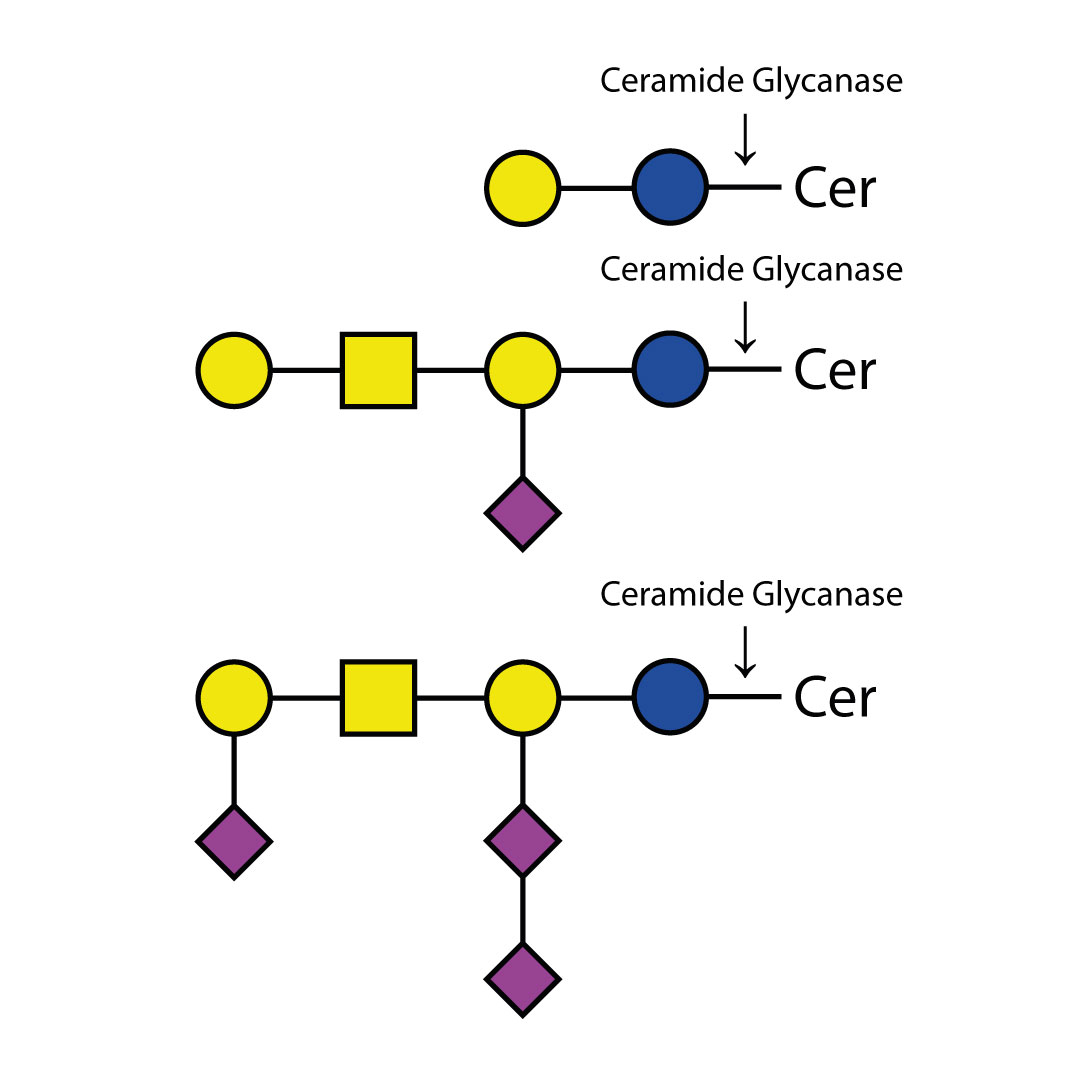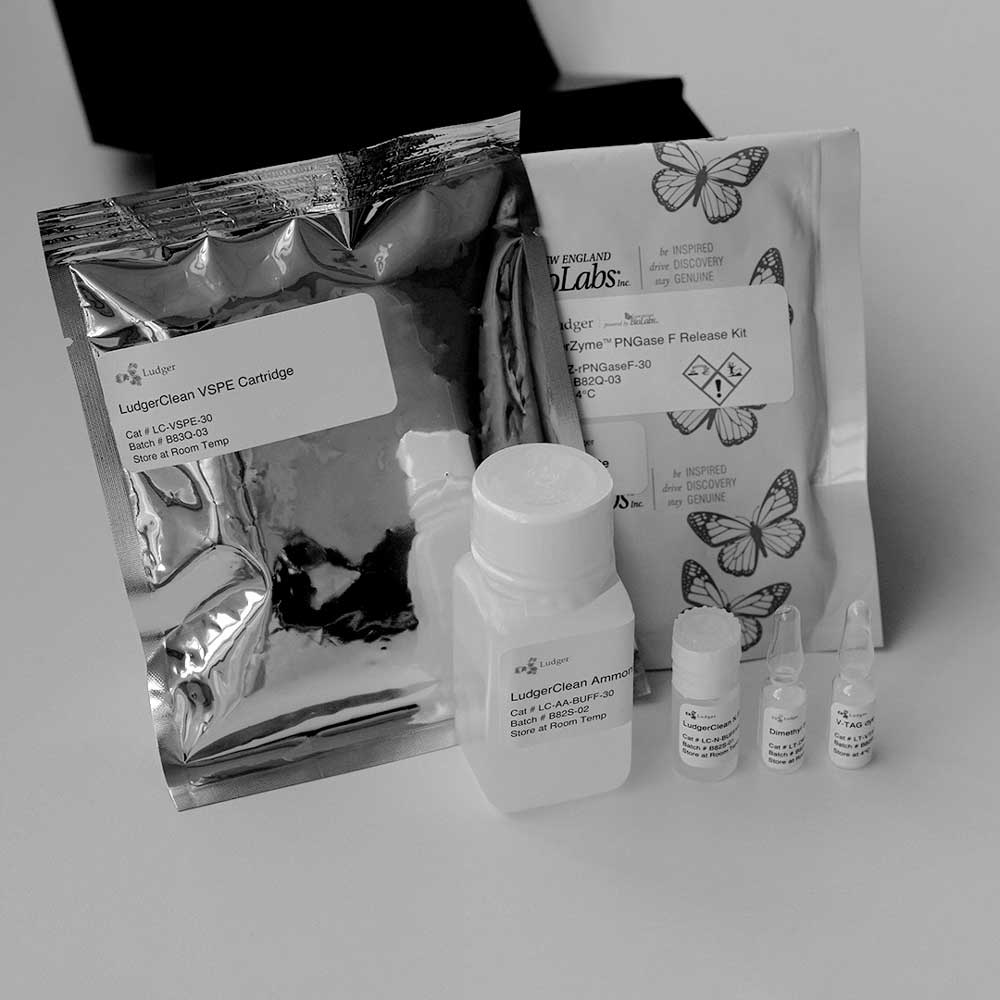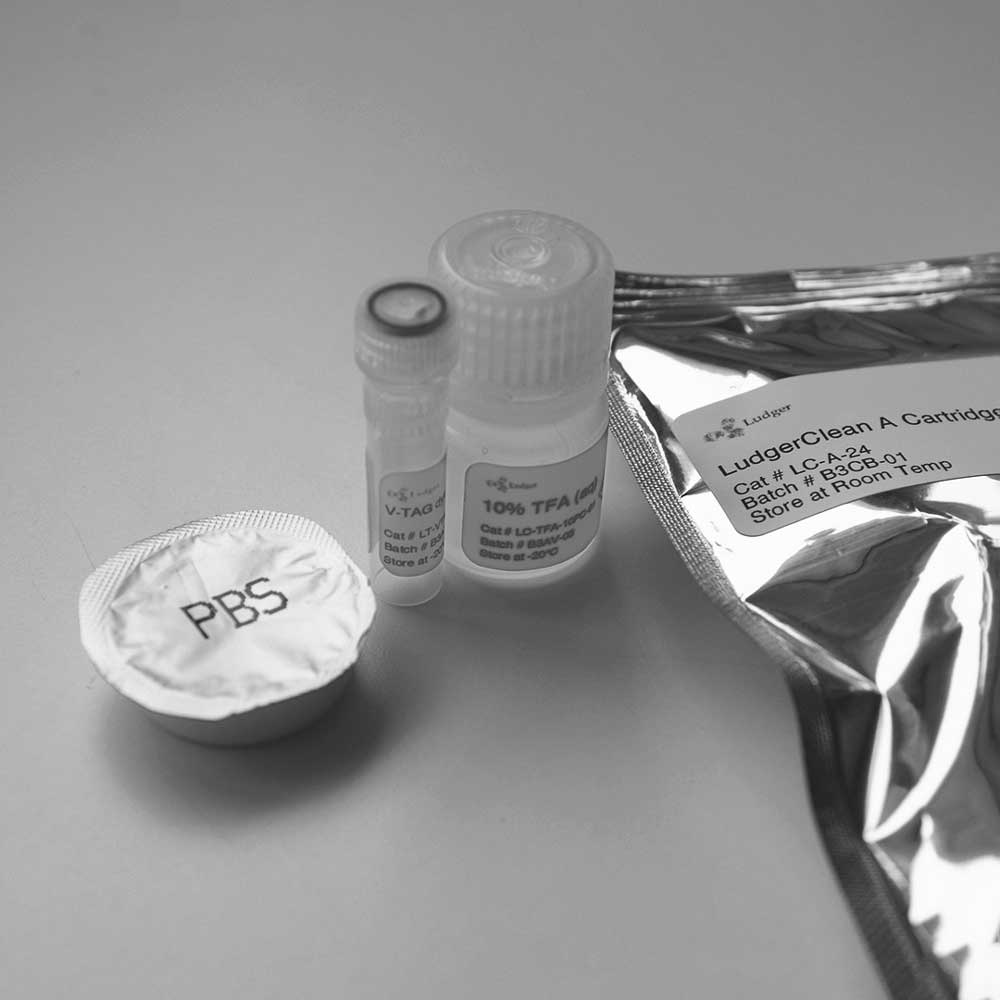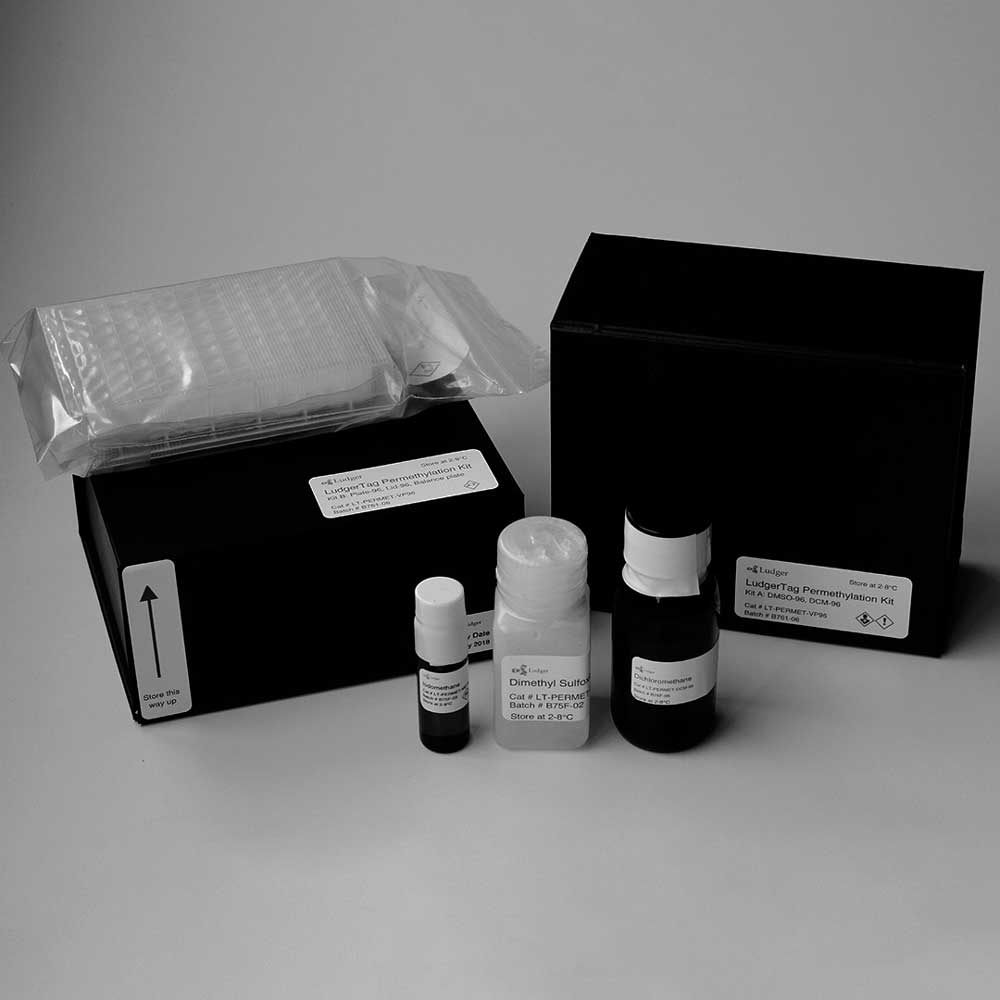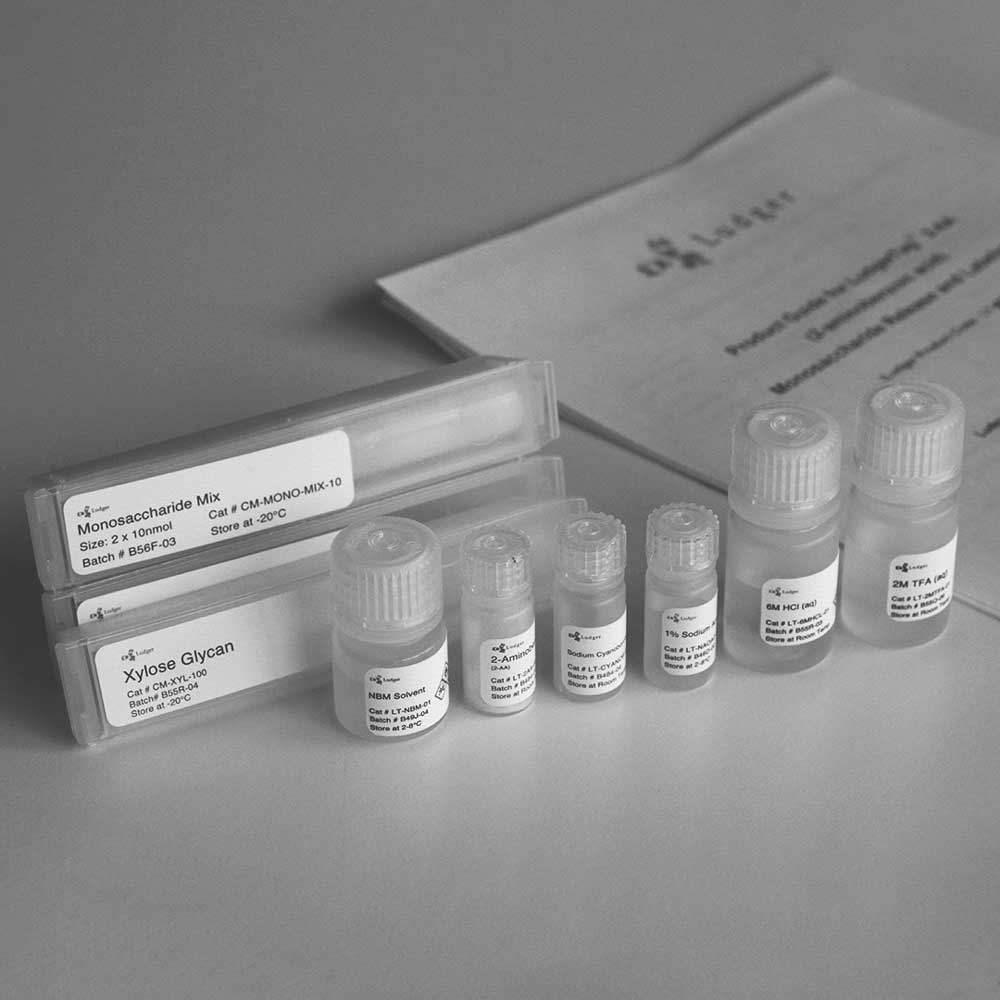
.gif)

-
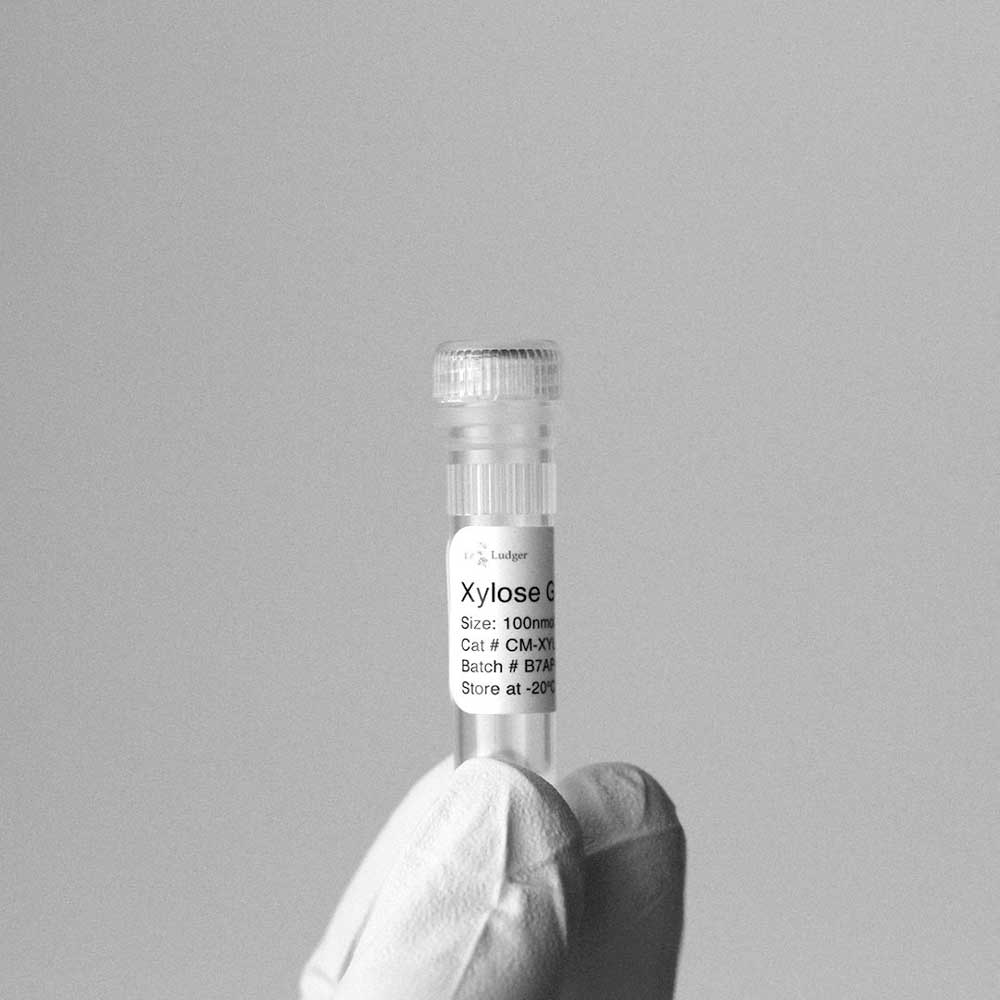

-
木糖定量标准品,货号: CM-XYLOSE-100;参考价RMB1273元(具体询价)
https://www.ludger.com/product-catalogue/xylose-quantitative-standard/Xylose quantitative standard, 100nmol
Xylose can be used as an internal standard when performing monosaccharide analysis. It is a monosaccharide not typically found in mammalian or yeast expression vectors.
Ludger Monosaccharide Analysis Guide
Monosaccharide analysis is a regulatory requirement laid out in the ICH Q6B guidelines for the characterisation of biopharmaceuticals. This information can be used at all stages of drug development as a method of determining the type of glycosylation (N-linked and/or O-linked) and the extent to which glycosylation has occurred. It can also be used to demonstrate consistency between batches for QC lot release during the manufacturing process.
A widely used method for monosaccharide analysis is as follows:
Release of monosaccharides from the glycoprotein by mild acid hydrolysis.
Fluorescent labelling of released monosaccharides with 2-aminobenzoic acid (2AA).
Relative quantitative analysis of 2AA-labelled monosaccharides by HPLC column or UHPLC.
The LudgerTag™ Monosaccharide Release and Labelling kit (Cat No. LT-MONO-96) provides all that is required to release neutral and amino monosaccharides from glycoproteins and label with 2AA. The kit contains reagents and materials for up to 96 glycoprotein samples (typically, around 50 μg of glycoprotein per sample). It includes a quantitative standard (monomix) containing 6 monosaccharides. The monomix standard enables instrument calibration to quantitatively determine the monosaccharide components in your glycoprotein. We recommend a five-point calibration curve to be used for the monomix standard. Information on how to do this is explained in the kit guide.
Xylose, a monosaccharide typically found in plants and insects but not mammalian or yeast expression vectors, is also included. It can be used as an internal standard (i.e. added to each sample before labelling). This allows compensation for any pipetting/sample preparation errors that may have occurred during sample processing. We also recommend a purified glycopeptide standard, the first in a range of Ludger BioQuant™ quantitative standards, as a positive control. This quantitative standard (Cat No. BQ-GPEP-A2G2S2-10U) is a complex biantennary N-linked glycan terminating in two N-acetylneuraminic acids. Using this standard will enable you to check the efficiency of glycan release, labelling and recovery and will give you confidence in the accuracy of your monosaccharide measurements.
We offer two choices of columns for analysis of the labelled monosaccharides depending on whether you are using HPLC or UHPLC systems in your laboratory. If using an HPLC, the LudgerSep™ R2 column (Cat No. LS-R2-4.6x150) gives a very good separation of the seven main monosaccharides found in most N-link and O-link glycans. If you have a UHPLC system we recommend using the LudgerSep™ uR2 column (Cat No. LS-UR2-2.1x50) which can perform an 8-minute separation per sample.
-
0.000.00
Xylose quantitative standard, 100nmol
Xylose can be used as an internal standard when performing monosaccharide analysis. It is a monosaccharide not typically found in mammalian or yeast expression vectors.
Ludger Monosaccharide Analysis Guide
Monosaccharide analysis is a regulatory requirement laid out in the ICH Q6B guidelines for the characterisation of biopharmaceuticals. This information can be used at all stages of drug development as a method of determining the type of glycosylation (N-linked and/or O-linked) and the extent to which glycosylation has occurred. It can also be used to demonstrate consistency between batches for QC lot release during the manufacturing process.
A widely used method for monosaccharide analysis is as follows:
Release of monosaccharides from the glycoprotein by mild acid hydrolysis.
Fluorescent labelling of released monosaccharides with 2-aminobenzoic acid (2AA).
Relative quantitative analysis of 2AA-labelled monosaccharides by HPLC column or UHPLC.
The LudgerTag™ Monosaccharide Release and Labelling kit (Cat No. LT-MONO-96) provides all that is required to release neutral and amino monosaccharides from glycoproteins and label with 2AA. The kit contains reagents and materials for up to 96 glycoprotein samples (typically, around 50 μg of glycoprotein per sample). It includes a quantitative standard (monomix) containing 6 monosaccharides. The monomix standard enables instrument calibration to quantitatively determine the monosaccharide components in your glycoprotein. We recommend a five-point calibration curve to be used for the monomix standard. Information on how to do this is explained in the kit guide.
Xylose, a monosaccharide typically found in plants and insects but not mammalian or yeast expression vectors, is also included. It can be used as an internal standard (i.e. added to each sample before labelling). This allows compensation for any pipetting/sample preparation errors that may have occurred during sample processing. We also recommend a purified glycopeptide standard, the first in a range of Ludger BioQuant™ quantitative standards, as a positive control. This quantitative standard (Cat No. BQ-GPEP-A2G2S2-10U) is a complex biantennary N-linked glycan terminating in two N-acetylneuraminic acids. Using this standard will enable you to check the efficiency of glycan release, labelling and recovery and will give you confidence in the accuracy of your monosaccharide measurements.
We offer two choices of columns for analysis of the labelled monosaccharides depending on whether you are using HPLC or UHPLC systems in your laboratory. If using an HPLC, the LudgerSep™ R2 column (Cat No. LS-R2-4.6x150) gives a very good separation of the seven main monosaccharides found in most N-link and O-link glycans. If you have a UHPLC system we recommend using the LudgerSep™ uR2 column (Cat No. LS-UR2-2.1x50) which can perform an 8-minute separation per sample.
Xylose quantitative standard
Xylose can be used as an internal standard while performing monosaccharide analysis. This allows compensation for any pipetting/sample preparation errors that may have occurred during sample processing. Xylose is a monosaccharide typically found in plants and insects but not mammalian or yeast expression vectors. It should be added to each sample before labelling of released monosaccharides with 2-AA when using the LudgerTag Monosaccharide Analysis Kit.
We recommend the use of the Monomix standard along with the Xylose reference standard when performing monosaccharide analysis. The Monomix monosaccharide standard enables instrument calibration to quantitatively determine the monosaccharide components in your glycoprotein. Information on how to do this is explained in the Monosaccharide Analysis Kit documentation.
HPLC Analysis of the Monomix Standards with Xylose
HPLC analysis of 2-AA labelled monosaccharides is a robust method for determining monosaccharide levels in your glycoprotein sample. Some important issues need to be understood to enable effective data interpretation.
1. Each monosaccharide has a different fluorescence yield per nmol. A standard curve of monosaccharide concentration versus fluorescence needs to be determined.
2. Free dye is not removed from the samples after 2-AA labelling to ensure no monosaccharides are lost in a dye clean-up stage. Free dye elutes as a large off-scale peak at about 15 minutes and also several large peaks after 28 minutes.
3. N-acetylglucosamine and N-acetylgalactosamine are both de-N-acetylated during the acid hydrolysis step of this process to produce glucosamine and galactosamine respectively.
4. Glucosamine is subject to an approximate 4 % epimerisation resulting in mannosamine (Figure 2). Mannosamine elutes immediately before the galactosamine peak, with no baseline resolution.
5. Galactosamine also produces an epimer peak, typically smaller than 2 %. However, this epimer peak often elutes with the free dye peak.
6. The use of xylose as an internal standard allows samples to be compared directly. This allows compensation for any pipetting/sample preparation errors that may have occurred during sample processing.
7. Sample stability – we recommend keeping labelled samples in the freezer at -20 °C if you intend to store them for longer than one week.
Form: Dry. Dried by centrifugal evaporation from an aqueous solution.
Amount: 100 nmol
Storage: -20˚C both before and after dissolution. This product is stable for at least 5 years as supplied.
Shipping: The xylose monosaccharide standard can be shipped at ambient when dry. After dissolution, ship on dry ice.
Handling: Allow the unopened vial to reach ambient temperature and tap unopened on a solid surface to ensure that most of the lyophilized material is at the bottom of the vial. Gently remove the cap, add the desired volume of reconstitution medium, re-cap and mix thoroughly to bring all the oligosaccharides into the solution. For maximal recovery of oligosaccharide, ensure that the cap lining is also rinsed and centrifuge the reconstituted vial briefly before use. Ensure that any glass, plasticware or solvents used are free of glycosidases and environmental carbohydrates—Minimise exposure to elevated temperatures or extremes of pH. High temperatures and low pH will cause desialylation. High pH will cause epimerisation of the reducing terminus GlcNAc.
Safety: This product is non-hazardous and has been purified from natural sources certified to be free of all hazardous material including pathogenic biological agents.
电话:186 0210 8329
157 1167 5909
cindy.li@ludger.com
QQ:258363672 170439096
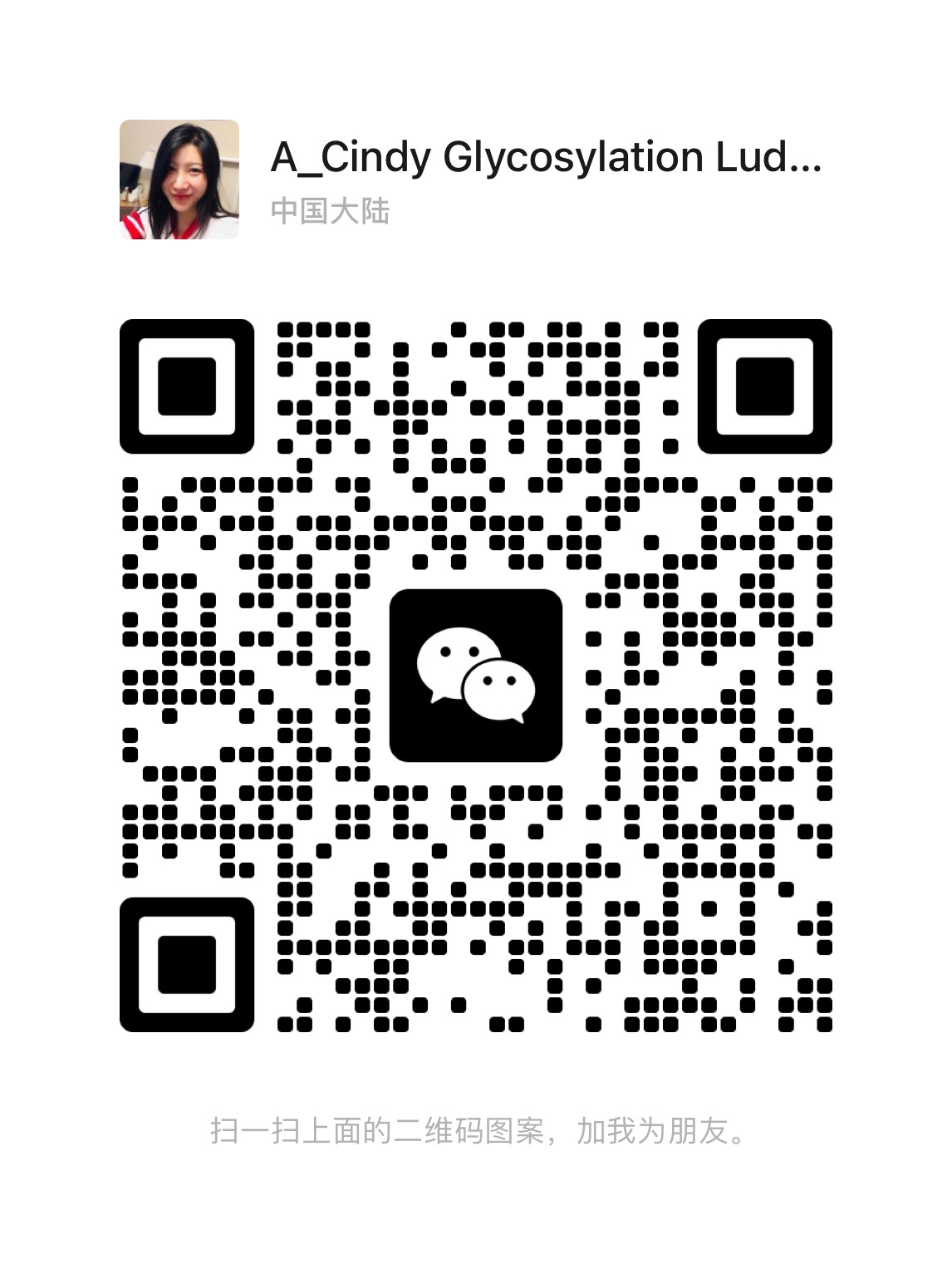
Ludger

QQ(Lily): 258363 672 QQ(Cindy): 170 439 096
地 址:上海静安区南京西路1266号


